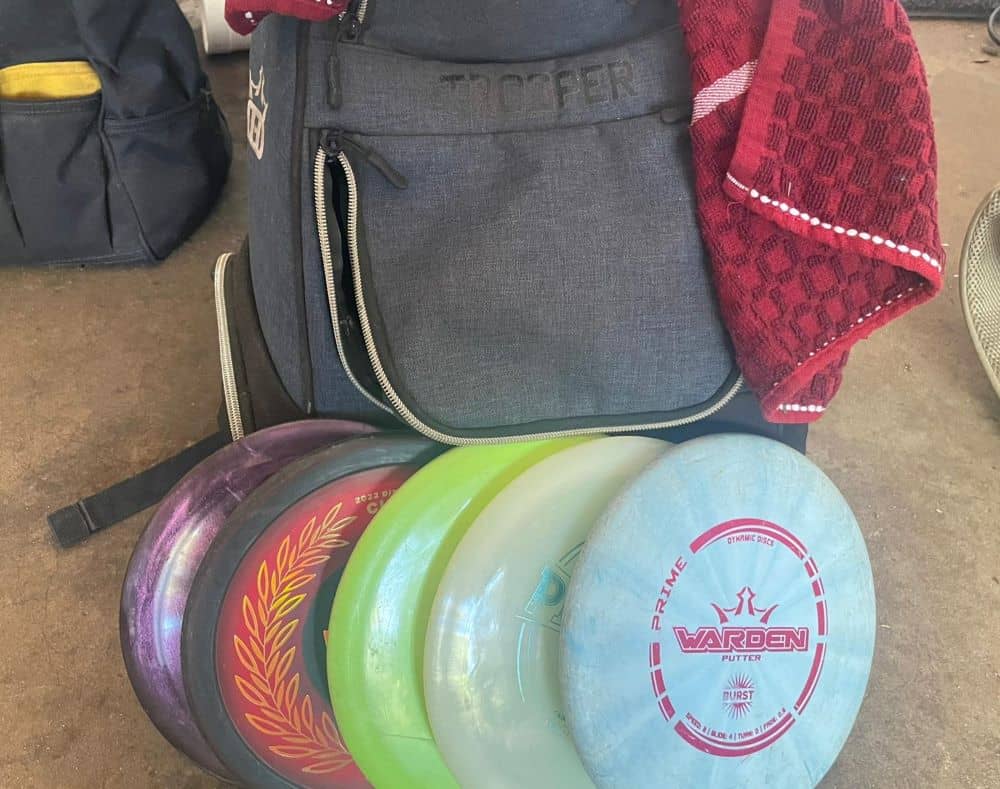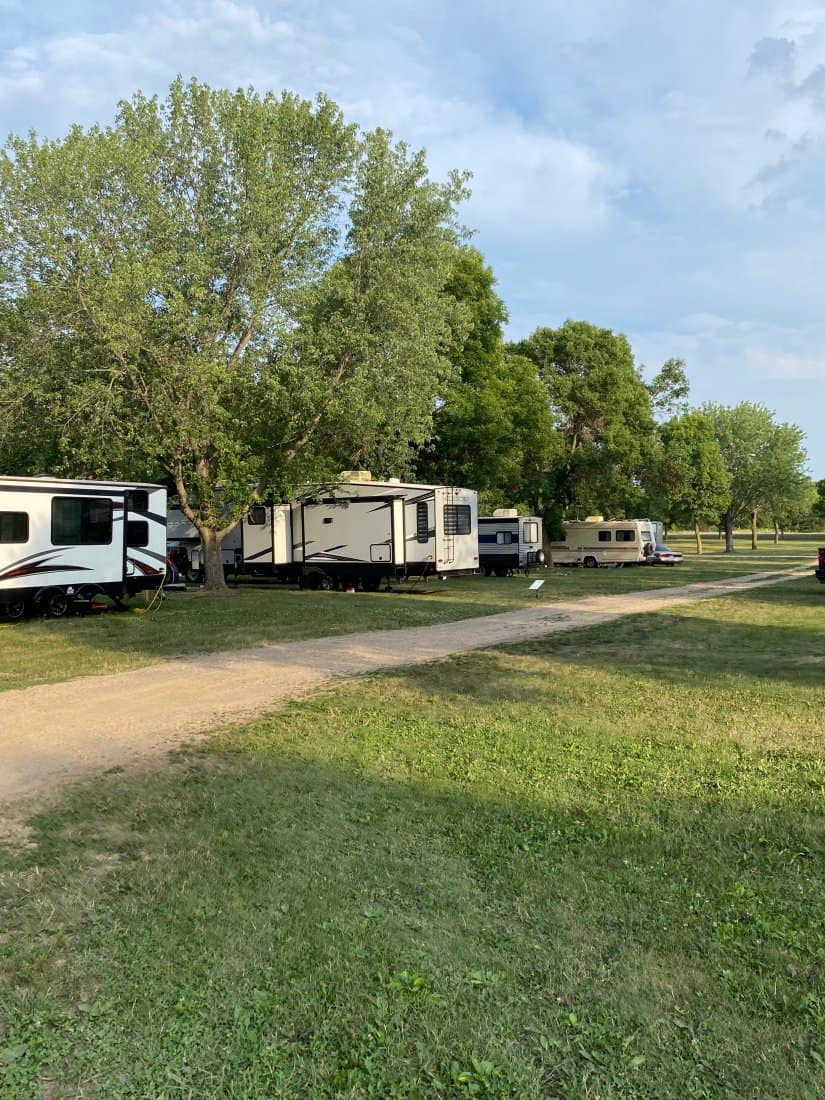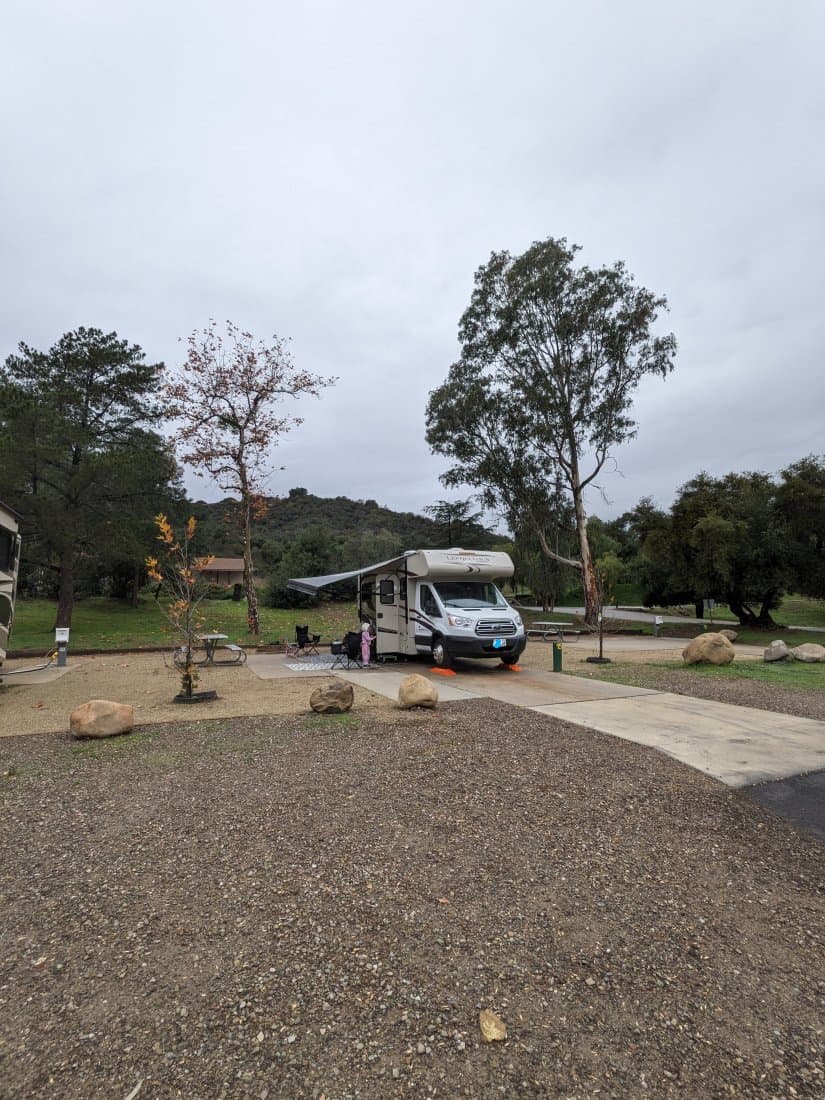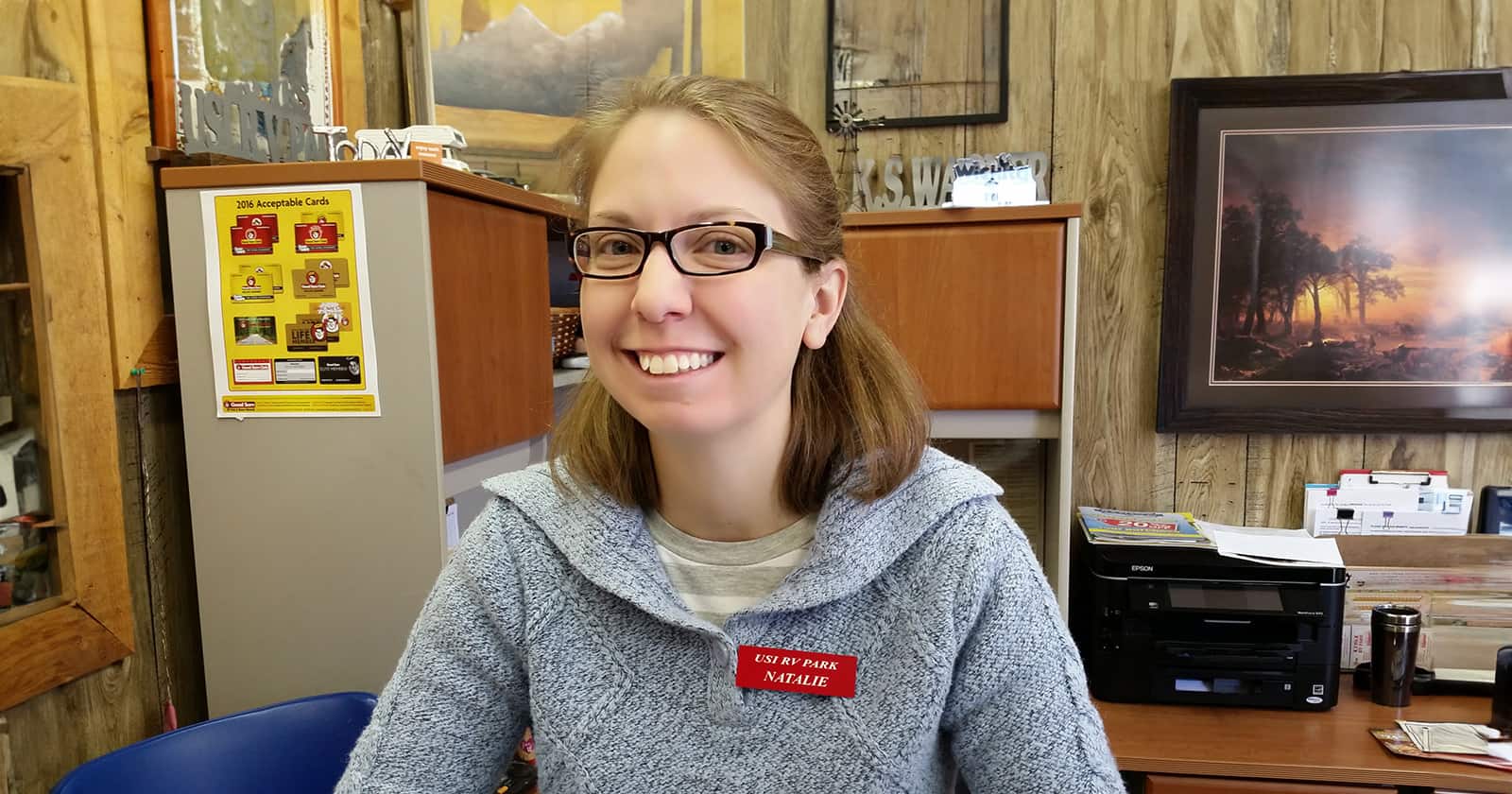Disc golf was once a fringe game, played in backyards with traditional frisbees and whatever someone could put together for a basket. Known as “Frisbee Golf,” people used whatever they could come up with for a target, including 50-gallon drums, trash cans, and even trees. The sport has come a long way since its inception in the 1960s.
From the 1990s into the turn of the millennium, disc golf exploded onto the scene, growing in popularity by leaps and bounds. Today, an average of 6 new courses are completed, somewhere in the United States, every day. In the last decade, more than 2/3 of 15,000 courses worldwide were created. At the same time, RV ownership is steadily increasing, gaining at a rate of 62% in the last two decades.
Disc golfers and RVers share a predilection toward the great outdoors, getting outside, and enjoying the sights and sounds. With that being said, it’s no surprise that we’re starting to see campground/disc golf course combinations cropping up throughout the U.S. But what is the game? How do you play? Is it worth picking a campground with a disc golf course available?
How to Play Disc GOlf
If you know and understand golf, you already know the rules of disc golf. The only difference is the use of a disc over striking a ball, and baskets rather than holes in the ground. Everything else is identical. For those who have never played disc golf, these aren’t your traditional frisbees. The discs used to advance across the fairway are denser, smaller, and specifically designed to achieve a variety of flight patterns.
Types of Discs

Each disc comes with four numbers, typically stamped on the top. These numbers indicate speed, glide, turn, and fade. When thrown correctly, the disc conforms to the given numbers. Speedier discs (drivers) are streamlined with a wide rim, and are made for long-distance throws from the tee box (300′ is the average drive distance, though over 500′ is achievable with practice and form).
Mid-range discs have a smaller, thicker rim—rounded and thicker. They’re designed for the approach, usually between 50′ and 150′. The last disc type is the putter, which resembles a mid-range but with a much thicker rim. It’s designed for anything within 50′ of the basket. There are thousands of discs manufactured from a wide number of brands.
Innova, Discraft, Viking, MVP, and the “Trilogy” plastics from Westside, Latitude 64, and Dynamic Discs are some of the most popular. All of these plastics have the same four-number system that defines the flight characteristics.
- Speed: Defines both the streamlined capability and the overall distance the disc is designed to travel. These make up your fairway drivers, drivers, and high-speed drivers.
- Glide: How well the disc hangs in the air as it travels. Higher glide means the disc will stay up longer, often sacrificing stability in high winds. The lower glide discs are your laser beams.
- Turn: If you’re a right-hand, backhand thrower, the turn number is how far the disc wants to turn to your right first before eventually fading in the opposite direction once it loses energy.
- Fade: This number indicates how hard your disc will dive at an angle once it loses energy and begins to fall.
Also, discs are defined by the type of plastic that goes into the mold (manufacturing) process. There are grippy discs, slick discs, flippy, understable, overstable, stable, and many more.
How to play Disc Golf
As with golf, you start at the tee box with a given par per hole. For instance, most holes are par 3s, and the goal is to make par or better in three shots, starting from the tee box.
Like golf, there are par 3s, par 4s, and par 5s. The game of disc golf scores the same as golf. The difference between the two sports (besides the disc versus golf ball and basket versus hole) is that disc golf is played on every terrain imaginable. There is no topography that’s off-limits in disc golf.
Extreme elevation changes, deep woods, rolling hills, wide open plains, mountains, rivers, lakes, and underbrush are all fair game. As long as there is a defined fairway, a tee box, and a basket, you’re all set. Scoring in disc golf is the same as in golf; with the lower the number, the better. Making a par three in two shots is a birdie. Making it in one is an ace.
Scoring is in the negative, with the lowest number winning the game. Every time you finish a hole with fewer shots than the par for that hole, you subtract from your overall score, with everyone beginning at zero. Finish over par, and you add points to your score.
This is what really separates disc golf from golf. Every course is a nature hike. You’ll traverse mountainous terrain, cross large streams, cut across roads, wander through fields, and spend a lot of time hacking your way through deep underbrush. It’s the ultimate game for nature enthusiasts.
A good course has navigation signs at the beginning and end of every hole. The tee box usually has a GPS or artistic rendering of the hole’s layout, distance, and the par. Once you reach the basket, there is usually a sign indicating where the next tee box is. However, that’s not always the case, which is why it’s a good idea to play on well-maintained courses.
RV Life and Disc Golf
The two go hand-in-hand, as natural as peanut butter and jelly. Disc golf is the perfect excuse to get out of the RV, stretch your legs, get some exercise, and have fun. Disc golfers are often very sociable, and the odds of a pick-up game of two versus two or more with complete strangers are always high.
Since disc golf often takes place deep in the woods, all manner of animals will cross your path. You’re as likely to spot a whitetail deer as you are an alligator or a moose, depending on where in the country you’re playing. If you travel the country, playing at each stop, you’ll encounter every manner of topography imaginable.
You might tee off in a flat-land swamp one day and tee off in the desert a few days later. The beauty of disc golf is the seamless integration of competitive sports and the beauty of nature.
Traveling with disc golf gear
The good thing about disc golf is you don’t need a bunch of equipment to play it. Some people like to convert strollers into disc carriers; however, for the most part, a backpack that holds between 8 and 20 discs is all you need. To get started, you really only need a single disc. Some players enjoy playing an entire course with nothing more than a putter, especially an overstable one that can hold its own on a long-distance drive.
If there’s a negative to disc golf, it’s that once you start collecting discs, it’s difficult to stop. As your game advances, you’ll want to try different plastic molds for more technical shots, better rollers, tomahawks, and your distance drivers as your long-distance arm improves. Regardless, if you really get into the game, you’ll accrue an enormous number of discs.
There’s nothing wrong with that, of course. But it is simpler to travel with a nice disc golf bag that carries enough discs to cover every aspect of your game. The typical disc golf gear for a disc golfer includes the following:
- A disc golf bag specifically designed for carrying discs
- High-speed drivers, fairway drivers, mid-range discs, and putters
- Place-marker discs (much smaller versions of regular discs that are made for marking your disc after each throw)
- Stroller or dolly disc golf conversion (optional)
- Towel for keeping your disc dry in the early mornings (dew), when you encounter water hazards, or during/after a rain
That’s it. That’s all you need, with the biggest part of the package (stroller or dolly) completely optional.
Benefits of disc golfing
It’s a ton of fun, even for the uninitiated, who are contemplating picking up the game and playing their first course. The dynamics of the courses are incredible and varied. No two courses will ever look alike, and each presents its own challenges and sights to see.
It’s fantastic exercise, especially for full-time RVers. It’s easy to get caught up in some of the luxuries of life on the road, spending your days driving and your evenings lounging inside or outside after the RV is set up. But that’s a deceptive lifestyle because it’s not exactly healthy. It’s good to get up and get out. Disc golf discs are very affordable ($10 to $25 per disc), so just getting enough gear to play your first game will easily cost less than $100.
In other words, there’s no excuse not to give it a try. Most disc golf courses present stunning views of the surrounding countryside, and both the game and the views are all the excuses you need to get out and get some solid exercise. It never gets boring and will change the way you plot out your next destination. Speaking of which, that leads us to the primary topic of the day.
5 campgrounds with disc golf courses
So you’re interested in playing disc golf but are wondering where to play. The good news is the disc golf and campground combination is a growing and attractive accommodation. While we’re listing five excellent choices here, it’s important to remember that there are nearly 10,000 courses in the U.S. and 15.5k campgrounds.
No matter where you camp, there is probably a disc golf course very close. The courses on this list are combinations of campgrounds DGC, but it’s nothing to drive a few miles down the road when you’re at other campgrounds, especially if you discover a deep love for the game (it’s not hard to fall in love with this sport by any means). As far as our list goes, these are not only campground and disc golf course combos, but they are also some of the top disc golf courses in their respective states or even the country.
1. Honey Bear Hollow – Peru, Indiana

Honey Bear Hollow is the perfect combination of relaxing campground and disc golf. There are over 100 well-shaded sites that include rustic camping, cabin rentals, pull-through W/E camping, 30-amp hookups (Deluxe-Full), and 50-amp hookups (Deluxe-Full).
On-site amenities include showers, laundry, a swimming pool, fishing, and a general convenience store. It’s a well-maintained campground surrounded by three state reserve areas around Mississinewa Lake. Of course, it also includes a 24-hole disc golf course.
Honey Bear Hollow DGC Features
- 4,000′ course length
- 24 holes
- Pro and amateur tees
- Mach II Baskets
- Concrete tee pads
- Moderate but dense elevation changes
The only knock against this course is that the baskets are rusty. However, it’s the perfect spot to set up camp and go learn the ins and outs of the game. As a 4,000′ course, it’s not incredibly long, but it will take some time to work through 24 holes.
The hilly topography is challenging and will require some discs with higher glide numbers to skim the hilltops without dropping. Much of the course is wooded as well, but the underbrush is well taken care of, and it opens the door for some exploration and beautiful views.
2. Apple River Family Campground – Somerset, Wisconsin

As the name implies, Apple River Family Campground is a family-focused affair with a ton of local and on-site amenities to keep you and the kiddos entertained. They offer smaller sites with 20-amp hookups and larger, with 20, 30, and 50-amp hookups.
There’s also rustic camping, and all camping rates are 20% off every day except Friday and Monday. There are frequent events going on that are family-friendly when you’re not tubing, boating, swimming, enjoying the heated pools, hitting up the bathhouses, and letting the kids go wild on the playground. (Burn up all that energy!)
Apple River Family Campground DGC Features
- 2,200′ course length
- 9 holes
- Grass tee pads
- Generic baskets
- Single tee pads
- Single basket locations
As you can probably see, this is a basic beginner’s course. In fact, it’s the perfect type of disc golf course for someone breaking into the game for the first time. It’s not exceedingly difficult, and it’s surrounded by excellent views and tons of other family activities.
Feel free to work your way through the course while the kids hit up the playground. Or, you can play a casual round before you cool off in the water or warm up in the heated pools. While it’s certainly not the best disc golf course in the world, it’s the icing on top of a fantastic family experience and a great opportunity to get into the sport for the first time.
3. Lake Amador Camping – Ione, California
Lake Amador is a beautiful slice of heaven in California, and it’s loaded with amenities and fun activities for single campers, large families, or couples. On-site fishing, swimming, disc golf, and hiking are all on the menu. The campground even includes a fantastic Clubhouse for dining or a relaxing evening in front of a roaring fireplace.
The Clubhouse includes a beer bar, breakfast and lunch dining, and the Tackle Box Cafe. There are 113 sites that include standard and premium setups, along with electric campsites and sites large enough to accommodate large RVs and second vehicles.
Lake Amador DGC – North and South Features
- 7,200′ course length (North) and 4,300′ to 6,500′ course length (South)
- 2 x 18 holes
- x8 water hazards on the North course and x3 on the South course
- Multiple basket locations on the South course
- Mach V baskets
- Concrete tee pads
If you are looking for a professional disc golf experience, look no further than Lake Amador DGC, which includes two very large disc golf courses. This is the premium experience the sport has to offer, with a ton of challenges and learning curves to overcome.
Each course embraces its own terrain, with the south course being smaller and flatter versus a north course with extreme elevation changes. The 400-acre lake comes into play in brutal fashion on the north course, with 8 water hazards to overcome. Both courses include LED lighting for night games, and there’s a DG pro shop on site in case the lake eats some of your plastic.
4. The Farm – Eureka Springs, Arkansas
The Farm is as big on the camping experience as it is on music. In fact, it’s a blast when it comes to music venues, winning multiple awards over the years, including Music Venue of the Year. If you like country music, you’ll feel right at home in Eureka Springs.
The Farms offers rustic camping and 25 electric and water sites. Bathroom and shower rooms are available for rustic campers and those who are rocking smaller teardrops and RVs that lack wet or dry baths. If you love to fish, White River, Table Rock Lake, and Beaver Lake are all within a 5-mile radius.
The Farm DGC Features
- Unknown course length (it’s a fairly lengthy course)
- 18 holes
- DISCatcher baskets
- Rubber tee pads (very grippy)
- Single tee pads (No pro or amateurs)
- Single basket locations
The Farm DGC is the prime example of a disc golf course that has it all. Open, wooded, water-hazard, and moderately hilly shots are all here. It’s not a difficult course, but the way you have to modify your throw and learn which plastic suits each hole makes it one of the better learning experiences on the list.
It’s a pretty little course, and the design features several shots where the terrain angles up or down from east to west or vice versa. None of the holes are incredibly difficult, but there are a few par 3s that stretch the definition of par 3 and what probably should be a par 4.
5. Lake Casitas Recreation Area and Coyote Point DGC – Ventura, California

Coyote Point DGC is a part of the Lake Casitas Recreation Area. They’re one and the same. When camping, you won’t have to drive to another part of town. Lake Casitas is a beautiful spot in Ventura, and it includes basic, basic hookup, deluxe hookup, and executive hookup sites.
For those with large RVs, 40′ concrete pads on the Deluxe and Executive sites are the biggest spots on offer. The campground just opened a new water park in May of this year, and, of course, there’s always plenty to do on Casitas Lake. Of the five campgrounds on this list, it’s hard to say that Lake Casitas isn’t the most stunning in terms of views.
Coyote Point DGC Features
- 5,800′ course length
- 18 holes
- A single water hazard
- Concrete tee pads
- Multiple basket locations
- Single tee pads
- Mach V baskets
Coyote Point mixes a few tight tunnel shots into an open field, grip-it-and-rip-it extravaganza. If you want to work on your long arm, this is the place to do it. Long-distance shots are often deceptive. Most advanced disc golf players assume simplicity when, in reality, the subtle play of the fairway is more difficult.
That describes Coyote Point in a nutshell. With multiple basket locations, you can play the same course multiple times, with a different experience each time. The signs are excellent and huge, making navigation a breeze while offering up a highly attractive, professional aesthetic.
Final Thoughts
If you’re not a disc golfer but are considering picking up the sport, it’s one of the most affordable hobbies around. It also plays well with RVers, since disc golf is all about exploration and trying out the thousands of courses across the continent. No matter where you travel next, there’s bound to be a disc golf course nearby.
There are 54 courses in Alaska, so that’s just about the only state you might have trouble finding one in. Disc golf doesn’t require a ton of expense or storage space. The smallest teardrop will handle your disc golf storage needs. It’s a fantastic form of exercise and an excellent excuse to get outside and enjoy everything nature has to offer.
Once you get started, it’s difficult to stop. There are thousands of brands, plastics, and molds to choose from, all of which come in several versions and with their own distinct stamps. Discs are collectibles as much as they are sports gear. The next time you park the RV for an evening, ask around for a local disc golf park and give it a try. You won’t be disappointed.





You left out Grand Vue Park in Moundsville, WVA. Pretty neat area and nice new amenities at this park. Staff and volunteers are wonderful
In Oregon, South Beach State Park (Newport, OR) on the coast, 18 holes. Loaner discs available at Hospitality Center.
Paint Creek campground in Ohio also has disc golf. Not too far from Hillsboro
L.L. Stub Stewart campground on Highway 26 between Portland and Seaside, OR. A standard course and a short course. Also, just a few miles away is Hornings Hideout, a facility that holds regional championships. They say they are among the top 30 courses in the world. The public can play for $5.